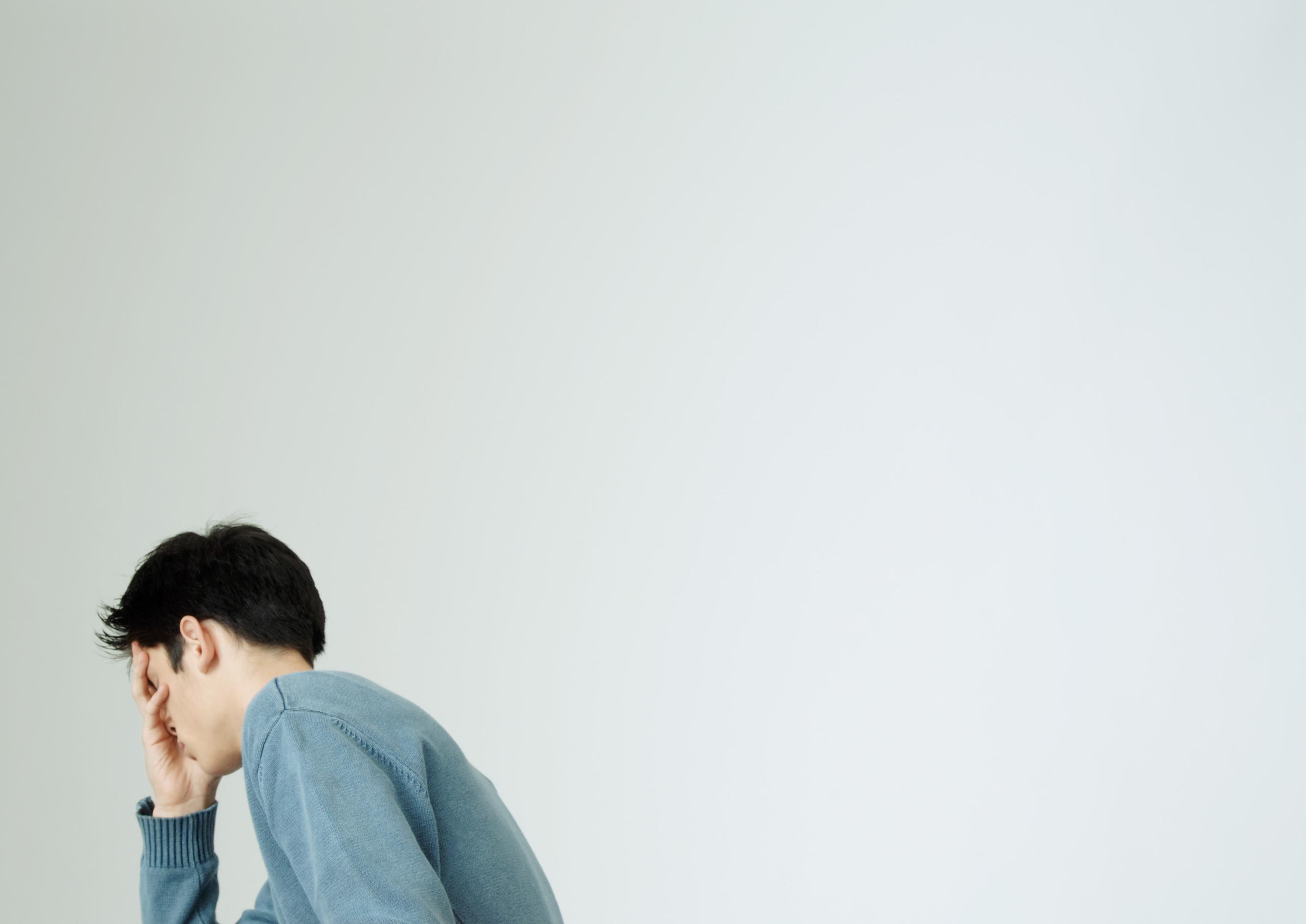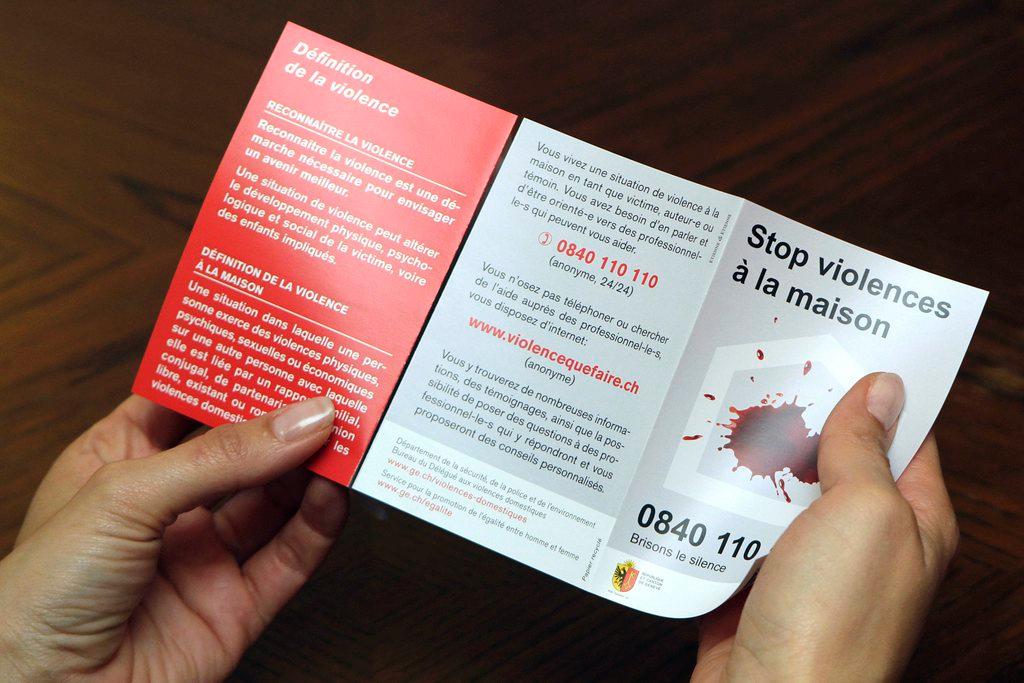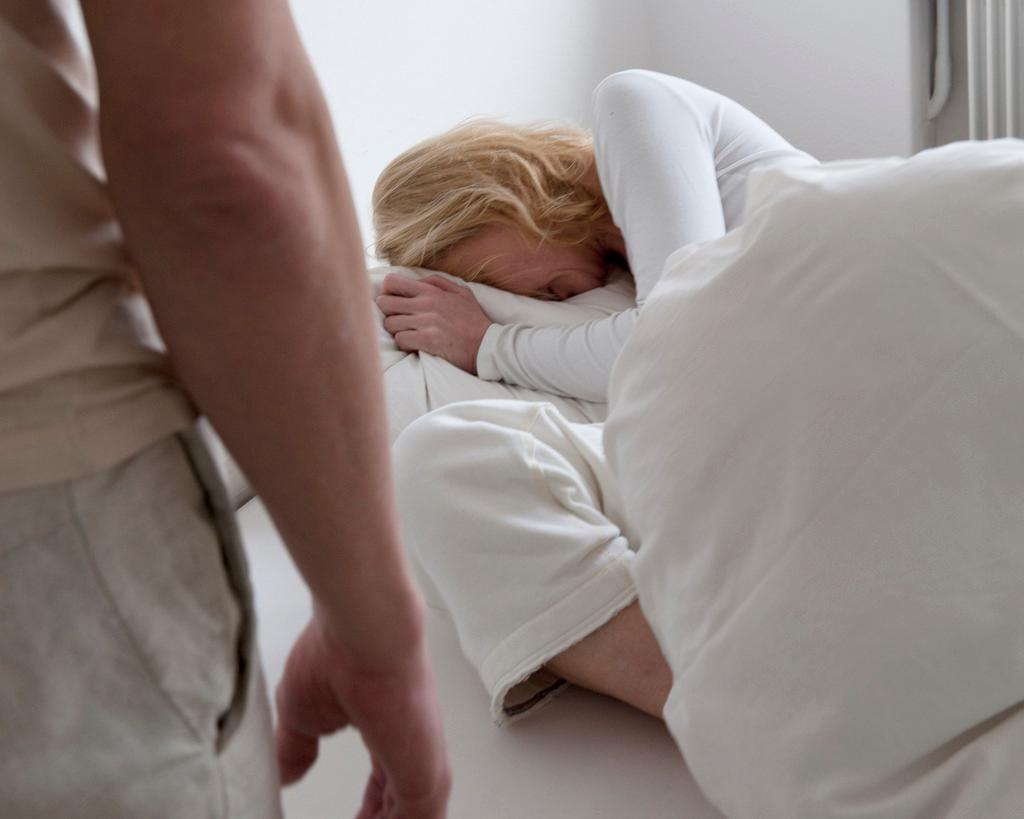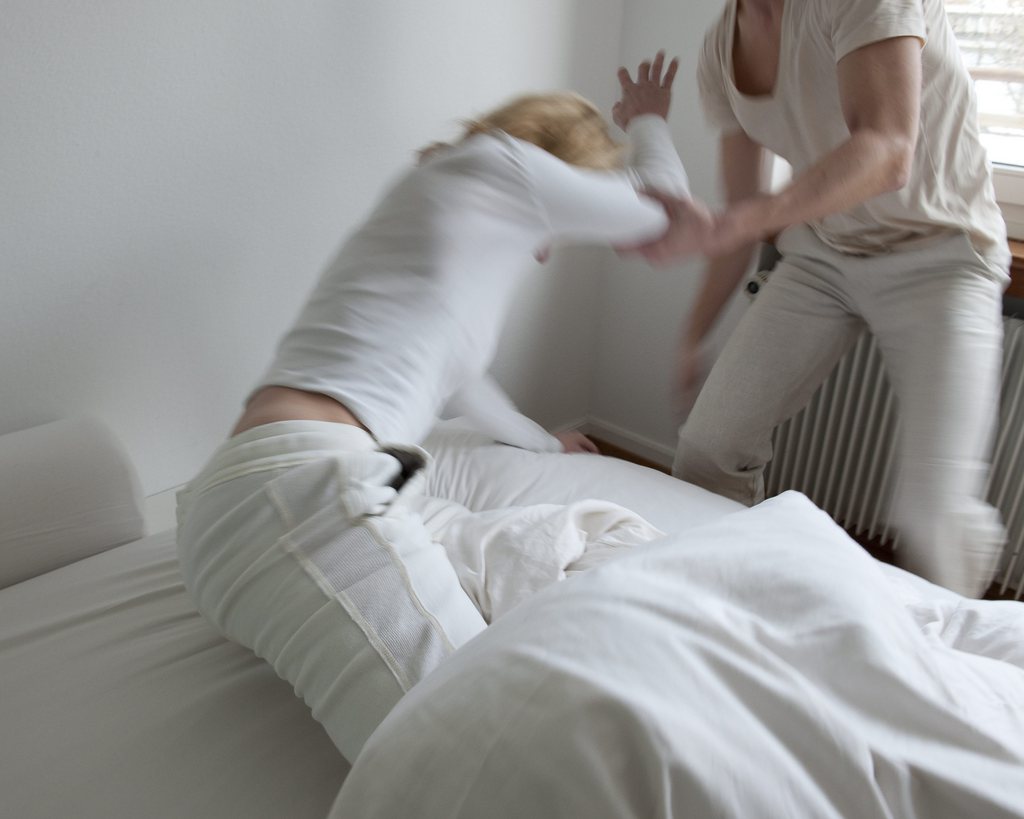A safe place from violence and judgement

When Switzerland’s first refuge for male victims of domestic violence opened five years ago, many questioned the need for such a place. Now demand has stayed high and the issue has become less of a taboo, say the two men who run the safe house.
The night after one of the biggest fights with his long-term girlfriend, Lucas* spent the night in his car. He has no siblings, never knew his father, and his mother passed away a number of years ago. So when his partner of over five years “lost control”, as he puts it, he finally felt he just had to get out of the home they shared with their two-year-old son. That was five months ago.
“I didn’t want my child to see these problems. I didn’t want him to grow up in a family like that,” he says. Twenty-seven-year-old Lucas told swissinfo.ch his story as he sat on the sofa of Switzerland’s first male refuge, located near Aarau in the centre of the country.
It’s an ordinary-looking house on an ordinary street, but up to five men and five children can live inside, although around two at a time is more common.
“I always wanted a family. I thought my girlfriend also wanted us to get married,” Lucas says, “but for me trust and loyalty are very important and there were moments when it turned out we didn’t have an understanding on these points…there were times when I was really hurt.”
He explains that he also came into major financial difficulties. “I really loved her, I tried to support her in every way I could, but you lose an overview of what’s realistic…I gave her everything I had.”
“It was violent…not on my side, but on the side of my ex-girlfriend. It had gone too far.”
He spent a few nights with a friend, but “didn’t want to be a burden” and within a week found his way to ‘ZwüscheHalt’, Swiss German for ‘stopover’, the name given to the men-only refuge.
Five years on, a change of attitude
The safe house is for men “suffering from domestic violence in whatever form – men who feel they should leave their home, with or without their children,” says Oliver Hunziker, the shelter’s founder.
Hunziker believes that through “the simple existence of this project” Swiss society started to acknowledge domestic violence against men as a problem. “Public awareness has increased a lot. When we started five years ago, the whole issue was ignored, mostly laughed at,” he adds.
Hans Bänziger, who manages the refuge, says he still hears the same questions from people when he speaks about male victims of domestic violence or the shelter.
“‘Do we really need it?’, ‘I don’t believe it’, ‘that doesn’t exist’…these are still issues but there has been a significant change in that people can see that this [the refuge] is needed now,” he explains.
Between 2009 and 2013, the average split between men and women affected by domestic violence was 24% men, 76% women, staying largely the same throughout this time period. Breaking down the types of domestic violence suffered, the figures show that men were most likely to suffer from slander or defamation, followed by attempted murder. Women were more likely to suffer rape or attempted rape.
There are two refuges just for men in Switzerland. To compare, the UK has over 20 and saw 84,799 cases of domestic violence against men and 304,522 against women in 2013, according to police statistics. Germany lacks accurate national figures, but out of 14,300 cases of domestic violence in Berlin in 2013, 23.8% of aggressors were believed to have been women. Germany has three men’s refuges, in Berlin as well as in the cities of Oldenburg and Brandenburg.
Financial aid and support for victims of violence
A study published in March by sociologist Anne Kersten at the University of Fribourg found that men made up only a quarter of all applications for the publicly-funded victim supportExternal link, even though they are victims of violence in general, just as often as women, according to criminal statistics.
This conclusion does not make a distinction between domestic violence and other forms of attacks, but it does give an indication of the level to which men hold back in seeking help.
In her research paper, Kersten wrote that it is not always clear that services and support networks to help victims of violence are also aimed at men. She recommended that space and resources be allocated to male victims of violence, with a distinction being made between domestic and other forms.
Hunziker says that getting recognition for men who are affected by violence is a major problem that still holds back their work at the refuge.
A night’s stay at the shelter costs CHF160 ($166) if the man’s case as a victim of violence is accepted by victim support, and he is then fully funded for his stay. If his case as a victim of violence is not accepted, the cost is reduced according to the man’s income.
“It is very difficult to get the [victim] status for women and even more for men,” Hunziker says. A police report is generally needed. “Physical violence is visible, you can go to the doctor, you can prove it with photos…but if you’re a victim of psychological violence it’s invisible.”
The refuge is largely supported by foundations, donations and grants. The budget is around CHF130,000 per year, including the costs of running the house and staff.
Feeling the squeeze
“We are one house in the middle of Switzerland. They [the men] can’t work in St Gallen [in eastern Switzerland] for example and then live here. But even if we only have two people living here at one time, these are still two people who would otherwise be on the street,” says Hunziker.
Twenty men stayed at the shelter in 2014.
“We realise that we need more houses in different parts of the country,” Hunziker explains, while talking about their plans for the future. He wants to make the service more accessible.
Aside from putting a roof over the men’s heads while they work out what their next steps can be after leaving the family home, it is also a place where men who have limited access to their children due to a separation can come and stay over for a weekend for example, with their kids.
If they live in a different part of the country or are sleeping on a friend’s sofa, it’s a way for them to carry on taking part in their children’s care.
The men’s refuge receives around 60-70 enquiries per month.
“They want to know what it costs, how it works. Some just want to talk [about their situation],” says Bänziger. And for some, just knowing that there is a place they could go, is enough for the time being.
*Name changed to protect person’s identity
The men’s refuge ‘ZwüscheHalt’ opened in 2009. The men who stay there have a key and are free to come and go.
It is intended to be an in-between point while the men work out their next move – whether it is returning to their partner and home or finding a new place to live.
The shelter’s manager helps with practical questions of separation and apartment searches, but also offers advice and listens to those who need to talk.

In compliance with the JTI standards
More: SWI swissinfo.ch certified by the Journalism Trust Initiative













You can find an overview of ongoing debates with our journalists here . Please join us!
If you want to start a conversation about a topic raised in this article or want to report factual errors, email us at english@swissinfo.ch.